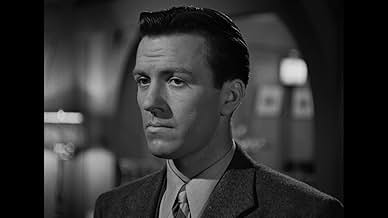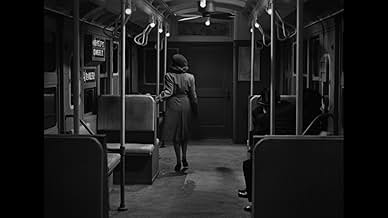VALUTAZIONE IMDb
6,7/10
8403
LA TUA VALUTAZIONE
Una donna in cerca della sorella scomparsa scopre un culto satanico nel Greenwich Village di New York e scopre che potrebbero essere coinvolti nella sua scomparsa.Una donna in cerca della sorella scomparsa scopre un culto satanico nel Greenwich Village di New York e scopre che potrebbero essere coinvolti nella sua scomparsa.Una donna in cerca della sorella scomparsa scopre un culto satanico nel Greenwich Village di New York e scopre che potrebbero essere coinvolti nella sua scomparsa.
- Premi
- 4 candidature totali
Joan Barclay
- Gladys
- (non citato nei titoli originali)
Patti Brill
- Minor Role
- (non citato nei titoli originali)
Wally Brown
- Durk
- (non citato nei titoli originali)
Feodor Chaliapin Jr.
- Leo
- (non citato nei titoli originali)
Wheaton Chambers
- Missing Girl's Father
- (non citato nei titoli originali)
James Conaty
- Party Guest
- (non citato nei titoli originali)
Edith Conrad
- Minor Role
- (non citato nei titoli originali)
Kernan Cripps
- Police Officer Danny
- (non citato nei titoli originali)
Recensioni in evidenza
The Seventh Victim is directed by Mark Robson and written by DeWitt Bodeen and Charles O'Neal. It stars Tom Conway, Jean Brooks, Isabel Jewell and Kim Hunter. Music is scored by Roy Webb and cinematography by Nicholas Musuraca.
When she is told her older sister Jacqueline has vanished, Mary Gibson is forced to leave her private school and travel to New York City to hopefully find her. Obtaining help from her sister's husband, Gregory, and the suspicious help of psychiatrist, Dr. Louis Judd, Mary finds that the deeper she goes the more dangerous the situation becomes, it appears that Jacqueline has got herself involved with something very sinister indeed.
He calleth all his children by their name.
Coming as it does from producer Val Lewton, one shouldn't be surprised that The Seventh Victim is a hauntingly poetic creeper of a movie, no shocks or out and out horror here, just a genuine sense of dread and a pervading sense of doom. When delving a bit further into the making of the picture it becomes apparent that an original cut of the piece was considerably longer, this explains a lot to me as the film, as good as it is in its 71 minute form, is not fully formed and at times not the easiest to fully understand. It would seem that although originally intended as a longer mainstream picture, a difference of opinion between Lewton and the studio (thought to be about the hiring of first time director Mark Robson) meant it was cut to a B movie standard.
The Palladists.
What remains, though, isn't at all bad, in fact it's unique. Robson's direction (obviously guided by Lewton) is perfectly sedate and in keeping with the mood of the piece, and between them they have conjured up some most unforgettable scenes and imagery. One particular shower scene lingers long after the credits roll, the perfect use of a silhouette probably had a certain Alfred Hitchcock taking notes, whilst the ending is quite simply a piece of bleak and unforgettable cinema. Musuraca is the key ingredient, though, the ace cinematographer is all about the shadows, blending noir with Gothic to create atmospheric paranoia. Satanism in Greenwich Village, suicide, psychological discord and urban dread, all potent little threads dangled into the slow burn pot. But ultimately it's the mood of the picture that gets you, unease and the murky mystery ensuring you are hooked throughout. 7.5/10
When she is told her older sister Jacqueline has vanished, Mary Gibson is forced to leave her private school and travel to New York City to hopefully find her. Obtaining help from her sister's husband, Gregory, and the suspicious help of psychiatrist, Dr. Louis Judd, Mary finds that the deeper she goes the more dangerous the situation becomes, it appears that Jacqueline has got herself involved with something very sinister indeed.
He calleth all his children by their name.
Coming as it does from producer Val Lewton, one shouldn't be surprised that The Seventh Victim is a hauntingly poetic creeper of a movie, no shocks or out and out horror here, just a genuine sense of dread and a pervading sense of doom. When delving a bit further into the making of the picture it becomes apparent that an original cut of the piece was considerably longer, this explains a lot to me as the film, as good as it is in its 71 minute form, is not fully formed and at times not the easiest to fully understand. It would seem that although originally intended as a longer mainstream picture, a difference of opinion between Lewton and the studio (thought to be about the hiring of first time director Mark Robson) meant it was cut to a B movie standard.
The Palladists.
What remains, though, isn't at all bad, in fact it's unique. Robson's direction (obviously guided by Lewton) is perfectly sedate and in keeping with the mood of the piece, and between them they have conjured up some most unforgettable scenes and imagery. One particular shower scene lingers long after the credits roll, the perfect use of a silhouette probably had a certain Alfred Hitchcock taking notes, whilst the ending is quite simply a piece of bleak and unforgettable cinema. Musuraca is the key ingredient, though, the ace cinematographer is all about the shadows, blending noir with Gothic to create atmospheric paranoia. Satanism in Greenwich Village, suicide, psychological discord and urban dread, all potent little threads dangled into the slow burn pot. But ultimately it's the mood of the picture that gets you, unease and the murky mystery ensuring you are hooked throughout. 7.5/10
What "The 7th Victim" has going for it is its uniqueness. It certainly is unlike any film from that era that I remember seeing.
This is one of those films that it helps to know nothing about before viewing. To read any sort of capsule about the flick would definitely take away from the enjoyment of the film.
Having said that, I am not totally satisfied with the payoffs the movie provides. There are too many gaps in logic, combined with a bit too much moralizing. Some people find themselves in situations in this film that just simply seem to lack any credibility.
For some fascinating sequences (most notably, one that takes place in a shower and seems to have been seen by Alfred Hitchcock) this film is definitely worth a look-see.
For me, the individual elements of the film was far more interesting than the sum of its parts.
This is one of those films that it helps to know nothing about before viewing. To read any sort of capsule about the flick would definitely take away from the enjoyment of the film.
Having said that, I am not totally satisfied with the payoffs the movie provides. There are too many gaps in logic, combined with a bit too much moralizing. Some people find themselves in situations in this film that just simply seem to lack any credibility.
For some fascinating sequences (most notably, one that takes place in a shower and seems to have been seen by Alfred Hitchcock) this film is definitely worth a look-see.
For me, the individual elements of the film was far more interesting than the sum of its parts.
I'm amazed not one reviewer has mentioned the outstanding contribution by Jean Brooks as the missing Jacqueline Gibson. Although she makes a late appearance Jean is very impressive in her five scenes, particularly her monologue describing how she came to join the Palladists and her nighttime flight being pursued by the assassin with the switchblade. None of the Lord's prayer survives in the print shown on British television. This is strange as two lines were reportedly intact when the film was originally shown in British cinemas.The excellent Brooks who appeared in two other Lewton films was sadly wasted by RKO and subsequently relegated to support and bit roles.
THE SEVENTH VICTIM is one of the best films produced by Val Lewton, famous for his wartime series of low budgeted, but brillantly spooky thrillers. A young girl (Kim Hunter) tries to locate her missing sister in Manhattan. In doing so, she uncovers a witch coven. There are so many masterful moments in this classic. In one scene, she is stalked by top-hatted cultists in a deserted subway, in another scene, as she showers, a female cultist confronts her (Shades of PSYCHO?) and there are terrific shocks as an exiled cultist tries to escape the coven. A must for horror fans!
No surprise that Val Lewton was involved with The Seventh Victim, his fingerprints can be seen on every frame. Like Cat People and I Walked With A Zombie, the atmosphere oozes from the screen, although Tournier was not involved here. Young Kim Hunter tries to find her sister, only to find she has fallen into the clutches of a group of Satanists. Oddly, the Satanists are presented as a gentile bunch, no raving lunatics here, they all seem disturbingly sane. There are some magnificent images here. Hunter breaking into her sisters room to find nothing but a chair and a noose, a creepy shower scene that pre-dates Psycho and the extraordinary downbeat ending. A grim little chiller that remains unsettlingly plausible throughout.
Lo sapevi?
- QuizErford Gage, who played the poet Jason Hoag, enlisted in the U.S. Army in August 1943 (around the time this film was released) and was killed in action in the Phillipines in March 1945.
- BlooperThe opening text reads: "I run from death, and death meets me as fast, And all my pleasures are like yesterday." The movie attributes the quote to John Donne's Holy Sonnet #7. But it is actually from Holy Sonnet #1.
- Curiosità sui crediti[title after starting credits] I runne to death, and death meets me as fast, and all my pleasures are like yesterday. Holy sonnet #VII Jonne Donne
- Versioni alternativeExists in a computer-colorized version
- ConnessioniFeatured in Aweful Movies with Deadly Earnest: The Seventh Victim (1967)
- Colonne sonoreMay Heaven Forgive You
(uncredited)
From "Martha"
Music by Friedrich von Flotow
Arranged by Roy Webb
[The tune playing on the barrel organ as Mary goes to the Dante for the first time]
I più visti
Accedi per valutare e creare un elenco di titoli salvati per ottenere consigli personalizzati
Dettagli
- Data di uscita
- Paese di origine
- Lingue
- Celebre anche come
- La séptima víctima
- Luoghi delle riprese
- Azienda produttrice
- Vedi altri crediti dell’azienda su IMDbPro
- Tempo di esecuzione1 ora 11 minuti
- Colore
- Proporzioni
- 1.37 : 1
Contribuisci a questa pagina
Suggerisci una modifica o aggiungi i contenuti mancanti

Divario superiore
By what name was La settima vittima (1943) officially released in India in English?
Rispondi

































